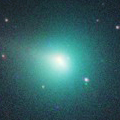
|
Now it is bright as 9.8 mag (Feb. 26, Osamu Miyazaki). It stays bright as 9-10 mag until March. In the Northern Hemisphere, it stays observable in excellent condition for a long time. In the Southern Hemisphere, it stays extremely low after this.
Date(TT) R.A. (2000) Decl. Delta r Elong. m1 Best Time(A, h)
Feb. 26 2 32.09 20 49.0 1.403 1.338 65 9.4 19:16 ( 84, 47)
Mar. 5 2 52.91 24 49.6 1.453 1.359 64 9.6 19:22 ( 91, 46)
|
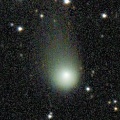
|
Now it is bright as 11.0 mag (Feb. 26, Osamu Miyazaki). It is expected to be observable at 5-6 mag for a long time from 2022 to 2023. In the Northern Hemisphere, it stays observable in good condition until autumn. However, it is not observable at the high light from autumn to 2023 summer. In the Southern Hemisphere, it stays observable in good condition after this.
Date(TT) R.A. (2000) Decl. Delta r Elong. m1 Best Time(A, h)
Feb. 26 18 39.46 11 18.9 4.257 3.891 61 10.0 5:09 (287, 41)
Mar. 5 18 43.52 11 19.3 4.114 3.828 66 9.9 5:01 (290, 44)
|
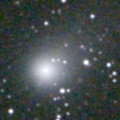
|
Now it is 10.0 mag (Feb. 26, Osamu Miyazaki). It stays bright as 10 mag until spring for a long time. It stays observable in good condition for a long time. It locates somewhat low in the Southern Hemisphere,
Date(TT) R.A. (2000) Decl. Delta r Elong. m1 Best Time(A, h)
Feb. 26 6 34.56 21 55.3 2.969 3.581 120 10.2 20:10 ( 0, 77)
Mar. 5 6 34.40 20 42.6 3.070 3.589 113 10.3 19:43 ( 0, 76)
|
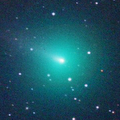
|
Brightened very rapidly. It is still bright as 11.2 mag (Feb. 26, Osamu Miyazaki). It will be fading after this.
Date(TT) R.A. (2000) Decl. Delta r Elong. m1 Best Time(A, h)
Feb. 26 4 30.40 11 58.3 0.719 1.231 90 10.6 19:16 ( 38, 62)
Mar. 5 5 4.62 13 25.1 0.767 1.277 92 11.1 19:22 ( 39, 64)
|
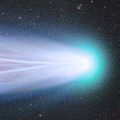
|
It brightened up to 3 mag from mid December to late December. Now it is fading. It has already faded down to 11.0 mag (Feb. 23, Martin Masek). In the Southern Hemisphere, it is appearing in the morning sky. In the Northern Hemisphere, it will become observable again at 13 mag in late April.
Date(TT) R.A. (2000) Decl. Delta r Elong. m1 Best Time(A, h)
Feb. 26 21 24.30 -34 59.4 1.987 1.243 30 10.9 5:09 (300,-18)
Mar. 5 21 21.42 -34 52.3 2.009 1.351 36 11.3 5:01 (303,-14)
|
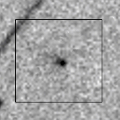
|
Now it is 12.7 mag (Feb. 4, Thomas Lehmann). In the Northern Hemisphere, it stays extremely low until spring. In the Southern Hemisphere, it stays observable at 11 mag until June.
Date(TT) R.A. (2000) Decl. Delta r Elong. m1 Best Time(A, h)
Feb. 26 19 50.19 -19 18.3 2.169 1.566 41 11.1 5:09 (300, 8)
Mar. 5 20 12.73 -18 25.8 2.132 1.558 42 11.0 5:01 (299, 8)
|
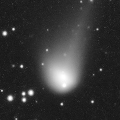
|
Now it is 12.4 mag (Feb. 23, Giuseppe Pappa). It will brighten up to 11.5 mag in spring. It stas observable in good condition for a long time. In the Northern Hemisphere, it stays somewhat low until spring.
Date(TT) R.A. (2000) Decl. Delta r Elong. m1 Best Time(A, h)
Feb. 26 12 4.29 -27 24.9 3.544 4.328 137 11.7 1:43 ( 0, 27)
Mar. 5 12 1.97 -26 28.8 3.474 4.317 144 11.6 1:13 ( 0, 28)
|
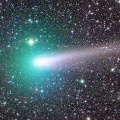
|
It brightened up to 8.5 mag from autumn to winter (Dec. 2, Toshihiko Ikemura, Hirohisa Sato). Now it is fading. It has already faded down to 12.1 mag (Feb. 26, Osamu Miyazaki). It stays observable in good condition for a long time. It locates somewhat low in the Southern Hemisphere,
Date(TT) R.A. (2000) Decl. Delta r Elong. m1 Best Time(A, h)
Feb. 26 8 22.84 27 1.1 0.927 1.823 143 11.9 21:58 ( 0, 82)
Mar. 5 8 24.57 26 19.5 1.022 1.878 137 12.3 21:33 ( 0, 81)
|
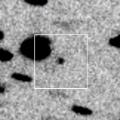
|
Now it is 14.7 mag (Feb. 3, Giuseppe Pappa). It stays 12-13 mag for a while. But actually, it is fainter than this ephemeris recently.
Date(TT) R.A. (2000) Decl. Delta r Elong. m1 Best Time(A, h)
Feb. 26 18 31.78 -22 26.7 1.787 1.546 59 12.2 5:09 (316, 18)
Mar. 5 18 54.27 -22 45.1 1.746 1.544 61 12.1 5:01 (316, 18)
|
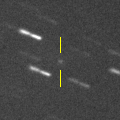
|
Now it is bright as 12.4 mag (Feb. 22, Seiichi Yoshida). It stays 13 mag until spring. In the Northern Hemisphere, it is observable only until early March. In the Southern Hemisphere, it is not observable until late May. But it will be observable in good condition after that.
Date(TT) R.A. (2000) Decl. Delta r Elong. m1 Best Time(A, h)
Feb. 26 22 15.97 45 36.5 1.462 1.202 54 12.6 5:09 (226, 18)
Mar. 5 23 1.44 42 14.7 1.524 1.142 48 12.5 5:01 (226, 12)
|
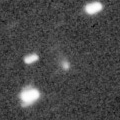
|
Now it is 15.1 mag (Feb. 1, Ken-ichi Kadota). It is expected to brighten very rapidly up to 4.5 mag in April. However, it is not observable at the high light. In the Northern Hemisphere, it will appear at 6 mag in mid May, and it stays observable in good condition after that while the comet will be fading. In the Southern Hemisphere, it is not observable until August.
Date(TT) R.A. (2000) Decl. Delta r Elong. m1 Best Time(A, h)
Feb. 26 23 33.84 -0 9.4 2.259 1.344 17 13.1 19:16 ( 91, -1)
Mar. 5 23 48.78 -0 20.0 2.156 1.212 13 12.5 19:22 ( 93, -5)
|

|
Now it is 16.1 mag (Feb. 19, J. L. Virlichie, P. Traverse, H. Roy). It will brighten up to 13 mag in spring. In the Southern Hemisphere, it stays observable in good condition for a long time. In the Northern Hemisphere, it is not observable until autumn. It is fainter than this ephemeris recently.
Date(TT) R.A. (2000) Decl. Delta r Elong. m1 Best Time(A, h)
Feb. 26 9 56.49 -70 24.0 2.988 3.313 100 13.6 23:27 ( 0,-16)
Mar. 5 9 11.31 -70 12.4 2.951 3.292 101 13.5 22:14 ( 0,-15)
|
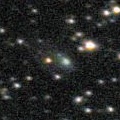
|
Now it is 14.9 mag (Nov. 28, Thomas Lehmann). It is expected to brighten up to 11 mag from spring to summer. In the Southen Hemisphere, it stays observable in good condition for a long time after this. In the Northern Hemisphere, it is hardly observable after this.
Date(TT) R.A. (2000) Decl. Delta r Elong. m1 Best Time(A, h)
Feb. 26 20 11.24 -16 51.3 2.950 2.225 35 13.8 5:09 (295, 6)
Mar. 5 20 18.71 -18 20.5 2.817 2.175 41 13.6 5:01 (298, 7)
|

|
Now it is bright as 11.1 mag (Jan. 24, Charles S. Morris). It has a large diffuse coma.
Date(TT) R.A. (2000) Decl. Delta r Elong. m1 Best Time(A, h)
Feb. 26 4 19.45 29 20.5 5.862 5.961 90 13.7 19:16 ( 77, 72)
Mar. 5 4 21.88 29 14.2 5.976 5.963 84 13.7 19:22 ( 84, 66)
|
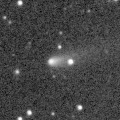
|
Now it is 13.8 mag (Feb. 11, Charles S. Morris). It is observable at 13.5 mag in good condition until spring.
Date(TT) R.A. (2000) Decl. Delta r Elong. m1 Best Time(A, h)
Feb. 26 9 38.93 19 11.0 1.439 2.403 162 13.8 23:14 ( 0, 74)
Mar. 5 9 33.76 19 23.2 1.449 2.385 154 13.7 22:41 ( 0, 74)
|

|
It brightened up to 12.3 mag from spring to summer (June 15, Marco Goiato). Now it is fading. It has already faded down to 14.1 mag (Feb. 9, Chris Wyatt).
Date(TT) R.A. (2000) Decl. Delta r Elong. m1 Best Time(A, h)
Feb. 26 14 6.01 17 5.6 3.732 4.413 128 14.1 3:44 ( 0, 72)
Mar. 5 13 58.68 19 5.4 3.695 4.453 135 14.1 3:10 ( 0, 74)
|
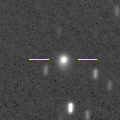
|
Now it is 13.9 mag (Feb. 10, Toshihiko Ikemura, Hirohisa Sato). It is expected to brighten up to 10 mag in 2023. In the Northern Hemisphere, it stays observable in good condition until 2023 autumn. In the Southern Hemipshere, it stays unobservable until 2023 summer.
Date(TT) R.A. (2000) Decl. Delta r Elong. m1 Best Time(A, h)
Feb. 26 12 34.26 55 7.0 4.372 5.044 128 14.2 2:13 (180, 70)
Mar. 5 12 23.27 56 44.4 4.327 4.987 127 14.2 1:35 (180, 68)
|
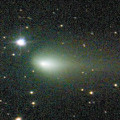
|
It brightened up to 10.6 mag in autumn (Oct. 10, Osamu Miyazaki). Now it is fading. It has already faded down to 12.8 mag (Feb. 11, Charles S. Morris). It stays observable in good condition for a long time.
Date(TT) R.A. (2000) Decl. Delta r Elong. m1 Best Time(A, h)
Feb. 26 6 28.53 12 29.0 1.647 2.301 119 14.2 20:04 ( 0, 68)
Mar. 5 6 33.63 13 2.7 1.761 2.344 113 14.5 19:42 ( 0, 68)
|
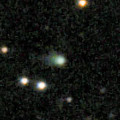
|
Now it is 14.4 mag (Feb. 8, Toshihiko Ikemura, Hirohisa Sato). It is expected to brighten up to 11 mag in 2023. In the Northern Hemisphere, it stays observable in good condition for a long time. It is not observable in the Southern Hemisphere.
Date(TT) R.A. (2000) Decl. Delta r Elong. m1 Best Time(A, h)
Feb. 26 16 39.63 35 45.4 4.848 5.020 94 14.4 5:09 (262, 76)
Mar. 5 16 36.64 36 45.7 4.733 4.980 98 14.3 5:01 (256, 80)
|

|
Now it is 15.3 mag (Feb. 3, Thomas Lehmann). Appearing in the morning. It will brighten up to 13 mag in summer.
Date(TT) R.A. (2000) Decl. Delta r Elong. m1 Best Time(A, h)
Feb. 26 18 6.35 -25 36.8 3.384 3.109 65 14.5 5:09 (323, 19)
Mar. 5 18 15.58 -25 49.4 3.287 3.102 70 14.4 5:01 (325, 20)
|

|
Now it is 15.7 mag (Feb. 2, Thomas Lehmann). It will brighten up to 12.5 mag in summer. In the Southern Hemisphere, it stays observable in excellent condition for a long time, although it became low temporarily in February. In the Northern Hemisphere, it is not observable until August.
Date(TT) R.A. (2000) Decl. Delta r Elong. m1 Best Time(A, h)
Feb. 26 22 33.96 -55 56.1 4.163 3.563 47 14.6 5:09 (318,-37)
Mar. 5 22 37.06 -55 17.2 4.092 3.526 49 14.5 5:01 (317,-34)
|
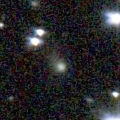
|
Now it is 15.4 mag (Feb. 11, Toshihiko Ikemura, Hirohisa Sato). It is expected to brighten up to 11 mag in 2023. In the Northern Hemisphere, it stays observable in good condition until November. But it becomes unobservable after that. In the Southern Hemisphere, it is appearing in the morning sky. It stays observable in good condition after this.
Date(TT) R.A. (2000) Decl. Delta r Elong. m1 Best Time(A, h)
Feb. 26 18 51.54 17 21.7 5.492 5.089 61 15.2 5:09 (278, 42)
Mar. 5 18 54.70 17 27.6 5.374 5.041 65 15.1 5:01 (281, 46)
|
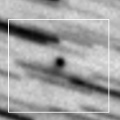
|
Now it is 15.0 mag (Feb. 4, J.-G. Bosch, F. Kugel, A. Klotz, J. Nicolas). It is expected to brighten up to 11 mag in summer. In the Northern Hemisphere, it stays observable in good condition until June when it brightens up to 11 mag. But it is not observable after the high light. In the Souther Hemisphere, it is not observable until October.
Date(TT) R.A. (2000) Decl. Delta r Elong. m1 Best Time(A, h)
Feb. 26 23 53.84 51 59.7 2.808 2.522 63 15.3 19:16 (136, 29)
Mar. 5 0 8.68 52 39.4 2.769 2.441 60 15.1 19:22 (137, 27)
|

|
Now it is 15.8 mag (Feb. 20, J. L. Virlichie, P. Traverse, H. Roy). It stays at 15-16 mag for a long time. In the Southern Hemisphere, it stays observable in excellent condition for a long time. In the Northern Hemiphere, it locates extremely low in spring.
Date(TT) R.A. (2000) Decl. Delta r Elong. m1 Best Time(A, h)
Feb. 26 17 21.09 -36 39.7 5.227 5.071 75 15.1 5:09 (338, 14)
Mar. 5 17 20.89 -37 46.8 5.117 5.080 82 15.1 5:01 (342, 14)
|
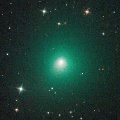
|
It brightened up to 9.5 mag in early summer (June 27, Marco Goiato). Now it is fading. It has faded down to 12.7 mag in autumn (Nov. 22, Thomas Lehmann). Now it is not observable. In the Southern Hemisphere, it is appearing in the morning sky. In the Northern Hemisphere, it is not observable until June when the comet will fade down to 17 mag.
Date(TT) R.A. (2000) Decl. Delta r Elong. m1 Best Time(A, h)
Feb. 26 21 25.11 -31 47.2 4.161 3.320 28 15.3 5:09 (298,-16)
Mar. 5 21 36.44 -31 32.0 4.176 3.377 32 15.4 5:01 (298,-15)
|
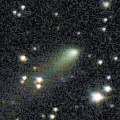
|
Now it is 15.4 mag (Feb. 6, Ken-ichi Kadota). It will be fading after this. In the Northern Hemisphere, it stays observable in good condition for a long time. It locates low in the Southern Hemisphere.
Date(TT) R.A. (2000) Decl. Delta r Elong. m1 Best Time(A, h)
Feb. 26 15 27.05 35 34.1 2.348 2.829 108 15.6 5:05 (180, 90)
Mar. 5 15 10.57 38 11.1 2.302 2.872 115 15.6 4:21 (180, 87)
|
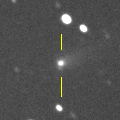
|
Now it is 15.8 mag (Feb. 8, Toshihiko Ikemura, Hirohisa Sato). It stays 15.5 mag until March, and it is observable in excellent condition.
Date(TT) R.A. (2000) Decl. Delta r Elong. m1 Best Time(A, h)
Feb. 26 11 47.35 10 40.2 1.247 2.210 162 15.7 1:26 ( 0, 66)
Mar. 5 11 43.07 11 32.8 1.253 2.233 168 15.8 0:54 ( 0, 66)
|
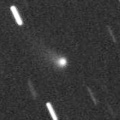
|
Now it is 14.5 mag (Feb. 8, Toshihiko Ikemura, Hirohisa Sato). It stays observable at 15 mag for a long time.
Date(TT) R.A. (2000) Decl. Delta r Elong. m1 Best Time(A, h)
Feb. 26 12 12.29 10 44.3 2.606 3.533 155 15.8 1:51 ( 0, 66)
Mar. 5 11 59.28 10 16.3 2.601 3.568 165 15.9 1:11 ( 0, 65)
|
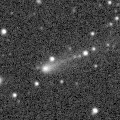
|
It brightened rapidly. Now it is 15.0 mag (Feb. 16, Ken-ichi Kadota). It stays observable in good condition for a while. But it will fade out rapidly after this, and it will be fainter than 18 mag in May.
Date(TT) R.A. (2000) Decl. Delta r Elong. m1 Best Time(A, h)
Feb. 26 7 52.42 13 37.3 1.745 2.582 139 15.8 21:28 ( 0, 69)
Mar. 5 7 51.29 13 26.2 1.818 2.595 132 16.0 20:59 ( 0, 68)
|
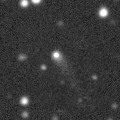
|
Now it is 15.8 mag (Feb. 21, ATLAS-MLO, Mauna Loa). It stays observable at 16 mag from 2021 to 2022.
Date(TT) R.A. (2000) Decl. Delta r Elong. m1 Best Time(A, h)
Feb. 26 16 17.19 21 13.7 4.619 4.846 97 16.1 5:09 (321, 73)
Mar. 5 16 19.06 23 3.1 4.554 4.860 102 16.1 5:01 (331, 76)
|
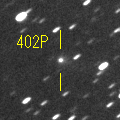
|
First return of a new periodic comet observed at 16 mag from 2003 to 2004. Now it is 16.3 mag (Feb. 17, Ken-ichi Kadota). It stays 16 mag until March, and it stays observable in excellent condition.
Date(TT) R.A. (2000) Decl. Delta r Elong. m1 Best Time(A, h)
Feb. 26 6 0.94 10 40.5 3.473 3.960 112 16.2 19:37 ( 0, 66)
Mar. 5 6 2.35 11 35.2 3.573 3.965 106 16.2 19:22 ( 7, 66)
|
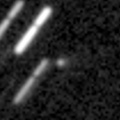
|
Now it is 17.5 mag (Feb. 22, ATLAS-MLO, Mauna Loa). It is expected to brighten up to 11 mag from summer to autumn. It stays observable in good condition in the Southern Hemisphere. In the Northern Hemisphere, it becomes extremely low from August to September.
Date(TT) R.A. (2000) Decl. Delta r Elong. m1 Best Time(A, h)
Feb. 26 10 36.62 29 16.9 1.398 2.351 159 16.6 0:16 ( 0, 84)
Mar. 5 10 26.58 30 21.3 1.358 2.293 154 16.3 23:33 ( 0, 85)
|
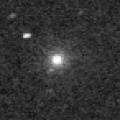
|
Now it is 18.7 mag (Feb. 13, Giuseppe Pappa). It was observed at 9-10 mag from late July to early August. Although it had been unobservable for a long time, it is appearing in the morning sky now.
Date(TT) R.A. (2000) Decl. Delta r Elong. m1 Best Time(A, h)
Feb. 26 16 41.22 -28 52.3 3.052 3.115 84 16.4 5:09 (343, 24)
Mar. 5 16 42.70 -29 34.6 3.024 3.198 90 16.5 5:01 (347, 24)
|

|
Now it is 16.2 mag (Jan. 27, SONEAR Observatory, Oliveira). It will be fading slowly after this. In the Southern Hemisphere, it stays observable in good condition for a long time, although it becomes extremely low temporarily from March to April. In the Northern Hemisphere, it is not observable until July.
Date(TT) R.A. (2000) Decl. Delta r Elong. m1 Best Time(A, h)
Feb. 26 0 22.15 -40 2.2 4.947 4.227 39 16.4 19:16 ( 51,-15)
Mar. 5 0 30.46 -38 31.1 4.996 4.259 38 16.4 19:22 ( 55,-18)
|

|
It has not been observed yet in this apparition. It was expected to be observable at 16 mag in good condition in spring. But actually, it is fainter than 19.2 mag (Jan. 22, John Drummond).
Date(TT) R.A. (2000) Decl. Delta r Elong. m1 Best Time(A, h)
Feb. 26 17 20.19 -34 18.1 1.362 1.473 75 16.7 5:09 (337, 16)
Mar. 5 17 46.83 -33 35.3 1.312 1.457 77 16.5 5:01 (335, 16)
|
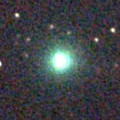
|
It brightened very rapidly, and brightened up to 8.9 mag (Sept. 11, Chris Wyatt). Now it is fading. It has already faded down to 18.5 mag (Feb. 11, J. L. Virlichie, P. Traverse, H. Roy). In the Southern Hemisphere, it stays observable after this while the comet will be fading. It is not observable after this in the Northern Hemisphere.
Date(TT) R.A. (2000) Decl. Delta r Elong. m1 Best Time(A, h)
Feb. 26 17 46.58 -55 26.6 2.706 2.588 72 16.6 5:09 (341, -5)
Mar. 5 17 52.93 -55 42.1 2.686 2.656 77 16.8 5:01 (343, -4)
|
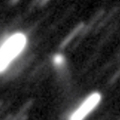
|
Now it is 16.6 mag (Feb. 11, D. Buczynski). It was observed at 15 mag in 2021. Now it is fading. It stays observable at 17 mag for a while in 2022.
Date(TT) R.A. (2000) Decl. Delta r Elong. m1 Best Time(A, h)
Feb. 26 18 33.43 5 46.2 5.452 5.063 61 16.6 5:09 (294, 39)
Mar. 5 18 37.02 7 5.2 5.379 5.078 67 16.6 5:01 (296, 43)
|

|
Brightened rapidly. Now it is 16.3 mag (Feb. 11, ATLAS-HKO, Haleakala). It becomes too low to observe in mid March in the Southern Hemisphere, or in mid April in the Northern Hemisphere.
Date(TT) R.A. (2000) Decl. Delta r Elong. m1 Best Time(A, h)
Feb. 26 2 41.52 12 38.8 4.161 3.847 64 16.6 19:16 ( 72, 44)
Mar. 5 2 48.43 13 0.9 4.260 3.854 59 16.7 19:22 ( 78, 39)
|
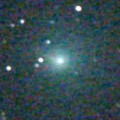
|
It brightened up to 9.8 mag from autumn to winter (Nov. 22, Thomas Lehmann). Now it is fading. It has already faded down to 16.0 mag (Feb. 11, Charles S. Morris). It will be fainter than 18 mag in March.
Date(TT) R.A. (2000) Decl. Delta r Elong. m1 Best Time(A, h)
Feb. 26 1 56.97 -4 53.3 2.672 2.176 50 16.7 19:16 ( 65, 24)
Mar. 5 2 10.35 -3 21.5 2.778 2.226 47 17.3 19:22 ( 69, 22)
|
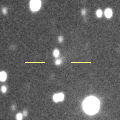
|
Now it is 15.2 mag (Feb. 16, Ken-ichi Kadota). It is observable at 16 mag in good condition from winter to spring. It is brighter than this ephemeris recently.
Date(TT) R.A. (2000) Decl. Delta r Elong. m1 Best Time(A, h)
Feb. 26 10 18.53 -19 18.4 1.470 2.387 151 16.7 23:53 ( 0, 36)
Mar. 5 10 17.58 -16 31.8 1.465 2.399 154 16.7 23:25 ( 0, 39)
|
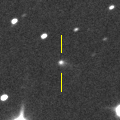
|
Now it is 16.9 mag (Jan. 31, Toshihiko Ikemura, Hirohisa Sato). It will brighten up to 14 mag in early 2023. It stays observable in good condition until spring.
Date(TT) R.A. (2000) Decl. Delta r Elong. m1 Best Time(A, h)
Feb. 26 4 22.69 7 36.7 4.547 4.622 88 16.7 19:16 ( 38, 57)
Mar. 5 4 25.56 8 17.0 4.611 4.581 82 16.7 19:22 ( 49, 54)
|

|
Now it is 17.2 mag (Jan. 18, J. Drummond). It brightened rapidly. It stays 17 mag for a long time from 2021 to 2022. In the Southern Hemisphere, it stays observable in good condition for a long time. In the Northern Hemisphere, it locates extremely low, and it is observable only until April.
Date(TT) R.A. (2000) Decl. Delta r Elong. m1 Best Time(A, h)
Feb. 26 7 10.26 -46 44.9 4.997 5.388 108 16.8 20:45 ( 0, 8)
Mar. 5 7 2.79 -46 18.4 5.044 5.395 105 16.8 20:10 ( 0, 9)
|
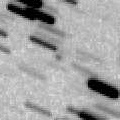
|
Now it is 17.8 mag (Jan. 2, Ken-ichi Kadota). It is expected to brighten up to 13.5 mag from June to July. It is observable only in the Southern Hemisphere at the high light. In the Northern Hemisphere, it is observable only until March when it brightens up to 16.5 mag.
Date(TT) R.A. (2000) Decl. Delta r Elong. m1 Best Time(A, h)
Feb. 26 1 18.93 1 9.3 2.567 1.948 42 16.9 19:16 ( 76, 21)
Mar. 5 1 23.13 -0 8.7 2.587 1.876 35 16.8 19:22 ( 80, 14)
|
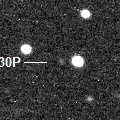
|
Now it is 18.5 mag (Feb. 20, Palomar Mountain--ZTF). It was expected to brighten up to 16.5-17 mag in winter. In its last apparition in 2015, it brightened up to 13 mag. But actually, it is fainter than this ephemeris recently.
Date(TT) R.A. (2000) Decl. Delta r Elong. m1 Best Time(A, h)
Feb. 26 1 33.99 -0 52.2 2.116 1.584 45 16.8 19:16 ( 72, 23)
Mar. 5 1 52.20 1 34.8 2.142 1.576 43 16.8 19:22 ( 77, 21)
|
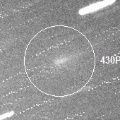
|
First return of a new periodic comet which brightened up to 17 mag in 2011. Now it is extremely faint as 20.4 mag (Feb. 4, J.-G. Bosch, F. Kugel, A. Klotz, J. Nicolas). It brightened up to 16.8 mag in October (Oct. 10, Ken-ichi Kadota), however, it has been fading after that.
Date(TT) R.A. (2000) Decl. Delta r Elong. m1 Best Time(A, h)
Feb. 26 15 19.37 -14 20.0 1.206 1.757 105 16.9 4:57 ( 0, 41)
Mar. 5 15 25.88 -14 53.6 1.171 1.787 111 16.9 4:36 ( 0, 40)
|
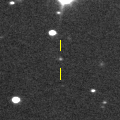
|
Now it is 16.4 mag (Feb. 18, J.-G. Bosch, F. Kugel). It will brighten up to 11.5 mag in 2022 winter. It stays observable while the comet will be brightening slowly.
Date(TT) R.A. (2000) Decl. Delta r Elong. m1 Best Time(A, h)
Feb. 26 3 15.63 15 8.2 3.086 2.961 73 16.9 19:16 ( 68, 52)
Mar. 5 3 21.91 15 39.6 3.143 2.922 68 16.9 19:22 ( 74, 47)
|

|
Now it is 16.9 mag (Jan. 8, Toshihiko Ikemura, Hirohisa Sato). Fading slowly. In the Northern Hemisphere, it stays observable in good condition for a long time. In the Southern Hemisphere, it is not observable after this.
Date(TT) R.A. (2000) Decl. Delta r Elong. m1 Best Time(A, h)
Feb. 26 19 16.77 52 50.2 9.266 9.055 74 16.9 5:09 (227, 47)
Mar. 5 19 19.28 53 45.7 9.256 9.065 75 16.9 5:01 (226, 49)
|
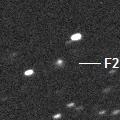
|
Now it is 17.0 mag (Feb. 11, Toshihiko Ikemura, Hirohisa Sato). It stays observable at 17-18 mag for a long time until 2024.
Date(TT) R.A. (2000) Decl. Delta r Elong. m1 Best Time(A, h)
Feb. 26 14 30.19 -2 48.5 8.314 8.854 120 17.0 4:08 ( 0, 52)
Mar. 5 14 27.25 -2 18.8 8.207 8.851 127 17.0 3:38 ( 0, 53)
|
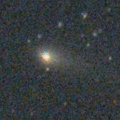
|
It brightened up to 13.1 mag in autumn (Oct. 28, Toshihiko Ikemura, Hirohisa Sato). Now it is fading. But it is still bright as 15.8 mag (Feb. 17, Ken-ichi Kadota). It stays observable in good condition for a long time.
Date(TT) R.A. (2000) Decl. Delta r Elong. m1 Best Time(A, h)
Feb. 26 3 31.16 13 25.9 1.948 1.973 76 17.0 19:16 ( 61, 54)
Mar. 5 3 46.17 14 28.9 2.048 2.007 73 17.3 19:22 ( 68, 51)
|
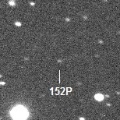
|
It will brighten up to 16 mag from spring to summer. It locates somewhat low in the Northern Hemisphere.
Date(TT) R.A. (2000) Decl. Delta r Elong. m1 Best Time(A, h)
Feb. 26 18 44.57 -21 58.3 3.535 3.104 56 17.1 5:09 (314, 17)
Mar. 5 18 54.29 -21 58.5 3.455 3.107 61 17.0 5:01 (315, 18)
|
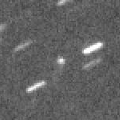
|
Now it is 16.6 mag (Jan. 31, Ken-ichi Kadota). It started fading before the perihelion passage. It was predicted to stay at 16 mag for a long time, but actually, it will be fainter than 18 mag in autumn. In the Northern Hemisphere, it stays observable in good condition for a long time. In the Southern Hemisphere, it is not observable until 2023.
Date(TT) R.A. (2000) Decl. Delta r Elong. m1 Best Time(A, h)
Feb. 26 23 28.33 77 5.5 3.727 3.795 86 17.1 19:16 (165, 33)
Mar. 5 23 36.30 76 14.7 3.783 3.786 82 17.1 19:22 (164, 32)
|
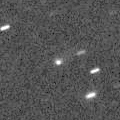
|
Now it is 17.3 mag (Feb. 11, Toshihiko Ikemura, Hirohisa Sato). It will be observable at 17 mag in good condition in spring.
Date(TT) R.A. (2000) Decl. Delta r Elong. m1 Best Time(A, h)
Feb. 26 13 43.42 -9 45.9 4.017 4.709 129 17.2 3:22 ( 0, 45)
Mar. 5 13 42.20 -9 42.1 3.935 4.708 136 17.1 2:53 ( 0, 45)
|
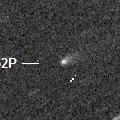
|
It brightened up to 16.4 mag from autumn to winter (Oct. 6, ATLAS-MLO, Mauna Loa). Now it is fading. It has already faded down to 17.9 mag (Feb. 11, Toshihiko Ikemura, Hirohisa Sato).
Date(TT) R.A. (2000) Decl. Delta r Elong. m1 Best Time(A, h)
Feb. 26 12 49.76 -12 28.2 1.354 2.208 140 17.2 2:28 ( 0, 42)
Mar. 5 12 44.98 -12 50.8 1.341 2.244 147 17.3 1:56 ( 0, 42)
|
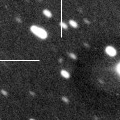
|
Now it is 16.8 mag (Feb. 11, ATLAS Chile, Rio Hurtado). It will brighten up to 13-14 mag from 2024 to 2025.
Date(TT) R.A. (2000) Decl. Delta r Elong. m1 Best Time(A, h)
Feb. 26 7 11.46 -30 31.0 7.879 8.379 117 17.2 20:46 ( 0, 24)
Mar. 5 7 10.32 -30 3.5 7.891 8.341 113 17.2 20:18 ( 0, 25)
|
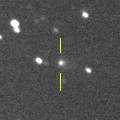
|
Now it is 16.9 mag (Jan. 31, Ken-ichi Kadota). It continued brightening for a while even after the perihelion passage. It stays observable at 16-17 mag in good condition for a while.
Date(TT) R.A. (2000) Decl. Delta r Elong. m1 Best Time(A, h)
Feb. 26 4 28.47 -4 54.8 3.984 4.065 87 17.3 19:16 ( 27, 47)
Mar. 5 4 31.83 -3 48.2 4.097 4.084 82 17.4 19:22 ( 37, 45)
|
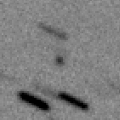
|
Now it is 17.8 mag (Jan. 31, Ken-ichi Kadota). It is observable at 17 mag from November to March. It is observable in good condition in the Northern Hemisphere, but it locates low in the Southern Hemisphere.
Date(TT) R.A. (2000) Decl. Delta r Elong. m1 Best Time(A, h)
Feb. 26 5 29.71 31 40.2 2.004 2.472 106 17.4 19:16 ( 33, 86)
Mar. 5 5 36.00 32 1.2 2.082 2.466 100 17.5 19:22 ( 72, 82)
|
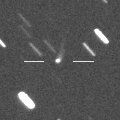
|
Now it is 18.4 mag (Jan. 9, J. Drummond). In the Southern Hemisphere, it stays observable for a long time. In the Northern Hemisphere, it is observable in low sky in spring.
Date(TT) R.A. (2000) Decl. Delta r Elong. m1 Best Time(A, h)
Feb. 26 10 27.11 -50 7.4 3.496 4.094 120 17.5 0:06 ( 0, 5)
Mar. 5 10 16.11 -48 19.7 3.500 4.144 124 17.5 23:22 ( 0, 7)
|
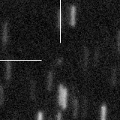
|
Now it is 17.5 mag (Feb. 17, J. L. Martin). It is expected to brighten up to 12 mag from winter to summer in 2023. In the Northern Hemisphere, it stays observable in good condition until 2023 spring. In the Southern Hemisphere, it is not observable until summer.
Date(TT) R.A. (2000) Decl. Delta r Elong. m1 Best Time(A, h)
Feb. 26 1 50.06 46 3.0 5.258 5.009 70 17.6 19:16 (123, 46)
Mar. 5 1 56.22 45 16.9 5.293 4.950 64 17.6 19:22 (123, 41)
|

|
Now it is 17.8 mag (Jan. 8, Toshihiko Ikemura, Hirohisa Sato). It stays 17-18 mag for a long time from 2021 to 2022. It is observable in excellent condition in the Northern Hemisphere, It locates somewhat low in the Southern Hemisphere.
Date(TT) R.A. (2000) Decl. Delta r Elong. m1 Best Time(A, h)
Feb. 26 2 37.91 27 7.6 5.638 5.362 68 17.6 19:16 ( 92, 51)
Mar. 5 2 37.17 26 53.8 5.756 5.360 61 17.6 19:22 ( 96, 43)
|

|
Now it is 17.4 mag (Feb. 2, ATLAS-MLO, Mauna Loa). In the Northern Hemisphere, it stays observable for a long time while it is getting fainter slowly. In the Southern Hemisphere, it will never be observable again.
Date(TT) R.A. (2000) Decl. Delta r Elong. m1 Best Time(A, h)
Feb. 26 14 48.77 45 12.4 7.369 7.838 114 17.6 4:27 (180, 80)
Mar. 5 14 45.81 45 43.2 7.375 7.885 117 17.6 3:56 (180, 79)
|
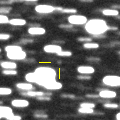
|
Now it is 17.4 mag (Jan. 29, Toshihiko Ikemura, Hirohisa Sato). It will brighten up to 15-16 mag in 2023. Cometary activity was detected by Cristovao Jacques on Dec. 12, and by Luca Buzzi and Andrea Aletti on Feb. 23.
Date(TT) R.A. (2000) Decl. Delta r Elong. m1 Best Time(A, h)
Feb. 26 6 45.89 -21 12.2 4.734 5.247 116 17.6 20:21 ( 0, 34)
Mar. 5 6 39.40 -20 15.8 4.771 5.201 110 17.6 19:47 ( 0, 35)
|
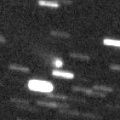
|
Now it is 17.7 mag (Feb. 19, J. L. Virlichie, P. Traverse, H. Roy). It was observed at 16 mag from 2020 to 2021. Now it is fading. It will be fainter than 18 mag in spring.
Date(TT) R.A. (2000) Decl. Delta r Elong. m1 Best Time(A, h)
Feb. 26 15 33.40 -38 59.0 5.762 5.950 96 17.7 5:09 (359, 16)
Mar. 5 15 29.09 -39 40.9 5.676 5.983 103 17.7 4:40 ( 0, 15)
|
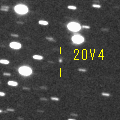
|
Now it is 16.9 mag (Jan. 31, ATLAS-HKO, Haleakala). It is observable at 17.5 mag in good condition in winter.
Date(TT) R.A. (2000) Decl. Delta r Elong. m1 Best Time(A, h)
Feb. 26 7 38.85 4 47.0 4.513 5.271 136 17.7 21:14 ( 0, 60)
Mar. 5 7 37.85 5 8.3 4.593 5.279 129 17.8 20:46 ( 0, 60)
|
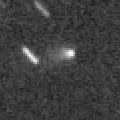
|
Now it is 17.7 mag (Feb. 21, ATLAS-HKO, Haleakala). It was expected to brighten up to 15.5 mag in winter. But actually, it is fading even before the perihelion passage. In the Northern Hemisphere, it stays observable in good condition for a long time. It is not observable at all in the Southern Hemisphere.
Date(TT) R.A. (2000) Decl. Delta r Elong. m1 Best Time(A, h)
Feb. 26 6 17.71 82 24.4 2.583 2.955 102 17.7 19:56 (180, 43)
Mar. 5 6 15.26 78 28.5 2.626 2.961 99 17.8 19:26 (180, 47)
|

|
In the Northern Hemisphere, it is observable until April when it brightens up to 16 mag. It is not observable in the Southern Hemisphere.
Date(TT) R.A. (2000) Decl. Delta r Elong. m1 Best Time(A, h)
Feb. 26 2 8.45 18 31.8 1.779 1.533 59 17.9 19:16 ( 85, 41)
Mar. 5 2 16.51 18 22.6 1.794 1.453 54 17.8 19:22 ( 89, 35)
|
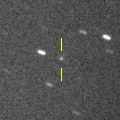
|
Now it is 17.7 mag (Feb. 10, Toshihiko Ikemura, Hirohisa Sato). It will brighten up to 16 mag in 2023. In the Southern Hemisphere, it stays observable in good condition for a long time. In the Northern Hemisphere, it is observable only until May.
Date(TT) R.A. (2000) Decl. Delta r Elong. m1 Best Time(A, h)
Feb. 26 10 13.90 -15 36.5 3.659 4.575 154 17.9 23:48 ( 0, 39)
Mar. 5 10 7.91 -15 55.9 3.619 4.532 154 17.9 23:15 ( 0, 39)
|
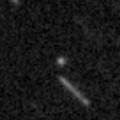
|
First return of a new periodic comet which brightened up to 16.5 mag in 1997. Now it is 17.8 mag (Feb. 7, H. Nohara). It is fainter than originally predicted, but it is brightening rapidly. It is observable in good condition from January to March.
Date(TT) R.A. (2000) Decl. Delta r Elong. m1 Best Time(A, h)
Feb. 26 8 24.77 23 23.8 1.190 2.083 145 18.2 22:00 ( 0, 78)
Mar. 5 8 24.14 22 11.1 1.220 2.073 138 18.2 21:32 ( 0, 77)
|
|
![]()
 8P/Tuttle
8P/Tuttle C/2020 O2 ( Amaral )
C/2020 O2 ( Amaral ) P/2021 N2 ( Fuls )
P/2021 N2 ( Fuls ) 6P/d'Arrest
6P/d'Arrest C/2021 U5 ( Catalina )
C/2021 U5 ( Catalina ) C/2020 S4 ( PanSTARRS )
C/2020 S4 ( PanSTARRS ) C/2020 F7 ( Lemmon )
C/2020 F7 ( Lemmon ) C/2021 T2 ( Fuls )
C/2021 T2 ( Fuls ) 230P/LINEAR
230P/LINEAR 430P/2021 Q2 ( Scotti )
430P/2021 Q2 ( Scotti ) 81P/Wild 2
81P/Wild 2 C/2019 O3 ( Palomar )
C/2019 O3 ( Palomar ) C/2020 F2 ( ATLAS )
C/2020 F2 ( ATLAS ) 132P/Helin-Roman-Alu 2
132P/Helin-Roman-Alu 2 152P/Helin-Lawrence
152P/Helin-Lawrence C/2020 U5 ( PanSTARRS )
C/2020 U5 ( PanSTARRS ) 99P/Kowal 1
99P/Kowal 1 52P/Harrington-Abell
52P/Harrington-Abell C/2021 G2 ( ATLAS )
C/2021 G2 ( ATLAS ) 254P/McNaught
254P/McNaught 274P/Tombaugh-Tenagra
274P/Tombaugh-Tenagra C/2019 T2 ( Lemmon )
C/2019 T2 ( Lemmon ) C/2021 Y1 ( ATLAS )
C/2021 Y1 ( ATLAS ) C/2020 U4 ( PanSTARRS )
C/2020 U4 ( PanSTARRS ) C/2018 N2 ( ASASSN )
C/2018 N2 ( ASASSN ) A/2021 X1
A/2021 X1 C/2017 Y2 ( PanSTARRS )
C/2017 Y2 ( PanSTARRS ) P/2020 V4 ( Rankin )
P/2020 V4 ( Rankin ) C/2021 D2 ( ZTF )
C/2021 D2 ( ZTF ) (3200) Phaethon
(3200) Phaethon C/2021 C5 ( PanSTARRS )
C/2021 C5 ( PanSTARRS ) 440P/2021 W2 ( Kobayashi )
440P/2021 W2 ( Kobayashi )![]()
































































